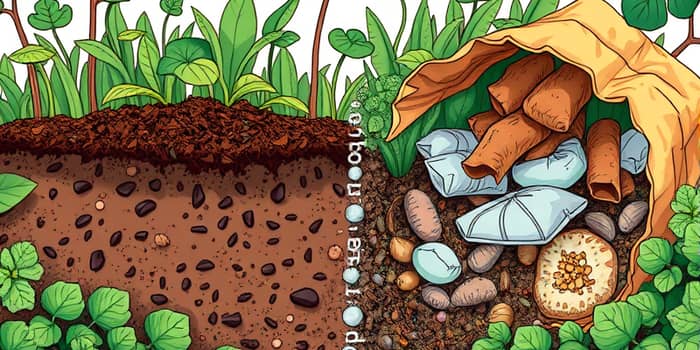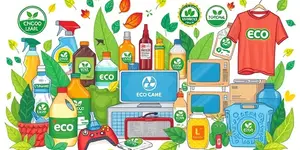In an era where environmental concerns shape everyday decisions, the terms biodegradable and compostable appear everywhere—from product packaging to takeout containers. Yet many consumers remain uncertain about their precise meanings and practical implications. Are biodegradable plastics always safe? Does compostable packaging truly eliminate waste? This article unpacks the core definitions, break down by naturally occurring microorganisms, and examines why the specific definitive decomposition timeframe in standards matters. By exploring real-world examples, certification processes, and environmental outcomes, readers will gain the clarity needed to make informed choices and reduce ecological footprints.
Understanding the terms: Biodegradable and Compostable
Biodegradable materials can be broken down by the action of microorganisms such as bacteria and fungi. When these natural agents metabolize organic matter, they convert it into basic elements like carbon dioxide, water, and biomass. However, the pace of degradation depends heavily on environmental conditions—temperature, moisture levels, and microbial presence play key roles. Additionally, greenwashing and misleading labels sometimes mask the truth: some “biodegradable” plastics degrade so slowly that they fragment into microplastics, leaving toxic residues behind. Without standardized testing or certification, consumers may face unpredictable outcomes when disposing of supposedly biodegradable items.
Compostable materials represent a stricter category within biodegradable products. Under approved composting conditions, they must fully transform into carbon dioxide, water, inorganic compounds, and biomass without leaving harmful residue. Certified compostable items typically satisfy requirements such as 90% degradation within 180 days in industrial composting facilities under controlled conditions. The resulting yield nutrient-rich compost for soil health that enriches plant growth. Standards like ASTM D6400 in the United States and EN 13432 in Europe verify that compostable materials meet rigorous benchmarks for safety, decomposition rate, and absence of toxic fragments.
Key Differences at a Glance
Although both biodegradable and compostable products break down naturally over time, their distinctions have meaningful consequences for sustainability, resource management, and soil health. The table below highlights the essential contrasts to help consumers and businesses evaluate their options.
Real-world Examples: From Bags to Packaging
Products marketed as biodegradable or compostable range from everyday household items to industrial packaging. Understanding real examples can demystify adoption and disposal practices.
- Biodegradable: paper, plant-based plastics, untreated natural fibers, some non-toxic mineral blends.
- Compostable: certified PLA-lined coffee cups, cornstarch utensils, sugarcane takeaway trays, certified yard and food waste bags.
Biodegradables often degrade in three to six months under ideal conditions but may persist much longer without sufficient heat or microbial activity. Conversely, compostable materials generally finish decomposition within standardized timeframes, ensuring a reliable outcome when processed correctly.
Certifications and Standards: Navigating Green Claims
With rising concerns over environmental integrity, certifications provide a credible path to verify whether a product truly meets compostable criteria. Recognizing reputable standards helps consumers avoid greenwashing and misleading labels and supports industry accountability.
- ASTM D6400 (US): Requires 90% decomposition in 180 days without toxic residues.
- EN 13432 (EU): Sets benchmarks for biodegradation rate, disintegration, and ecotoxicity.
- BPI Certification: Third-party endorsement in North America confirming industrial compostability.
- OK Compost (TÜV Austria): European mark for industrial and home compostable materials.
Always look for these symbols on packaging to ensure that materials will break down in approved facilities. In absence of certification, assumptions about compostability may end in landfill-bound waste and methane emissions.
Environmental Implications and Benefits
When managed properly, compostable products contribute directly to soil health and resource conservation. By replacing conventional plastics with compostable alternatives, communities can reduce reliance on chemical fertilizers, enhance soil structure, and lower greenhouse gas emissions. Compostable packaging that enters industrial facilities avoids the anaerobic conditions of landfills, where decomposition often produces methane, a potent greenhouse gas. Furthermore, lifecycle analyses show that producing compostable plastic typically consumes less energy and water, while emitting fewer greenhouse gases compared to traditional petroleum-based plastics.
Biodegradable materials without certification may still play a role in reducing waste volume, but they require vigilant disposal practices. In natural environments, they contribute to nutrient cycling but risk releasing microplastics or pollutants if not designed for safe breakdown. Ultimately, the environmental value of any product hinges on its entire lifecycle—from raw material sourcing to end-of-life processing.
Challenges and Considerations for Consumers
Despite compelling benefits, compostable and biodegradable products face practical hurdles. Limited composting infrastructure means that even certified items can end up in landfills if collection systems are inadequate. Consumers and waste managers must coordinate to ensure proper separation of organic waste streams. Additionally, mixing non-compostable materials with compost piles can contaminate the batch, undermining the quality of the final product.
Cost also factors into adoption: compostable goods often carry higher upfront prices, reflecting specialized manufacturing and certification processes. Overcoming these financial barriers requires scalable production, government incentives, and public education about long-term environmental savings.
Spotting Greenwashing: Tips for Ethical Choices
Greenwashing—the practice of overstating or fabricating environmental benefits—remains a significant issue in sustainable marketing. To make responsible choices:
- Seek clear labeling: verify third-party certifications like ASTM D6400 or EN 13432.
- Check disposal instructions: ensure local composting or industrial facilities can process the product.
- Research manufacturer transparency: credible companies publish data on materials, processes, and third-party tests.
- Avoid vague terms: words like “eco-friendly” or “green” without backing mean little by themselves.
Moving Forward: Toward a Circular Future
As we navigate the path toward a circular economy, both biodegradable and compostable materials play essential roles. By understanding the nuances between these categories and advocating for robust composting infrastructure, individuals and organizations can drive systemic change. Embracing certified compostable options, supporting local green waste programs, and demanding transparent labeling contribute to healthier soils, reduced greenhouse gases, and a more sustainable planet. The real power lies not only in choosing the right materials, but in fostering a holistic mindset that prioritizes resource regeneration, community engagement, and continuous innovation.
Ultimately, the distinction between biodegradable and compostable may seem subtle on a product label, but it carries profound implications for environmental stewardship. Armed with knowledge, consumers can transform everyday decisions into impactful actions that nurture the Earth for generations to come.
References
- https://elevatepackaging.com/blog/biodegradable-vs-compostable
- https://bpiworld.org/biodegradable-vs-compostable
- https://www.oceanwatch.org.au/uncategorized/compostable-vs-biodegradable/
- https://www.goodstartpackaging.com/biodegradable-vs-compostable-what-is-the-difference/
- https://naturespath.com/blogs/posts/whats-difference-biodegradable-compostable
- https://sifted.com/resources/compostable-packaging-the-pros-and-cons-in-2023/
- https://www.webstaurantstore.com/blog/454/biodegradable-degradable-and-compostable-whats-the-difference.html
- https://www.ellenmacarthurfoundation.org/compostable-biodegradable-and-bio-based-plastic-whats-the-difference










